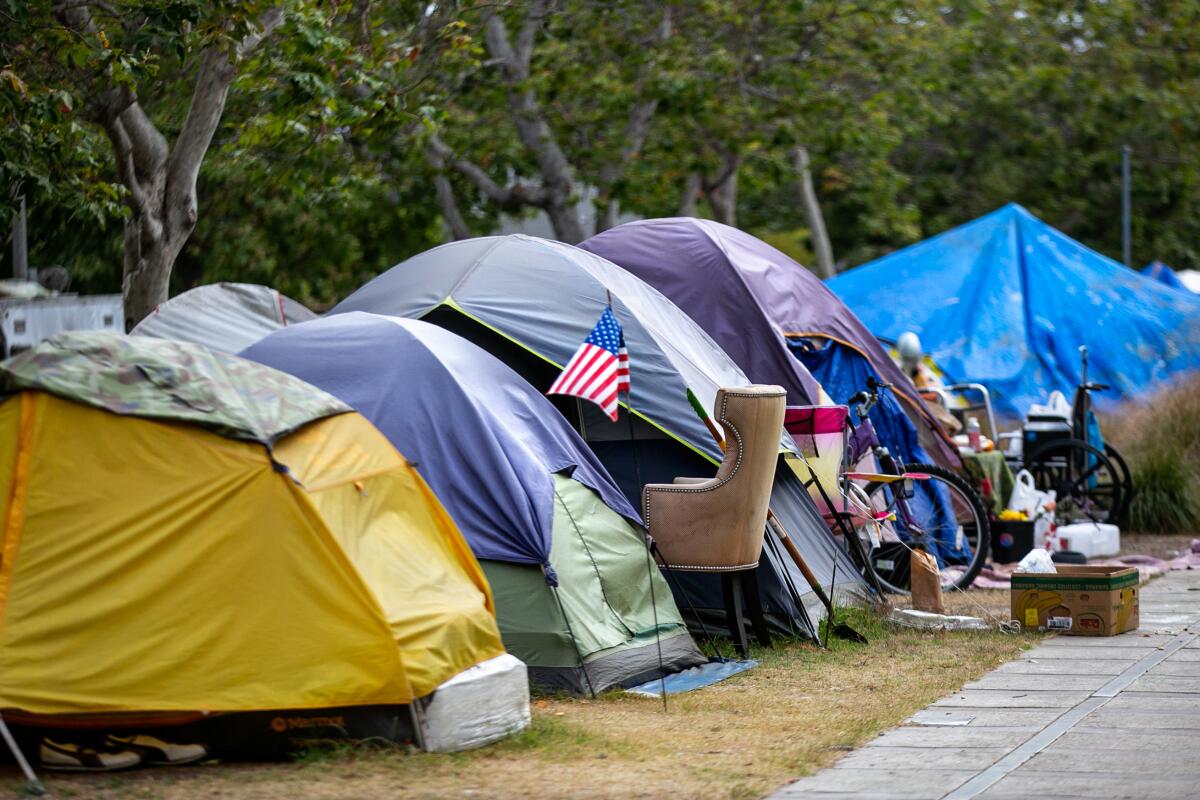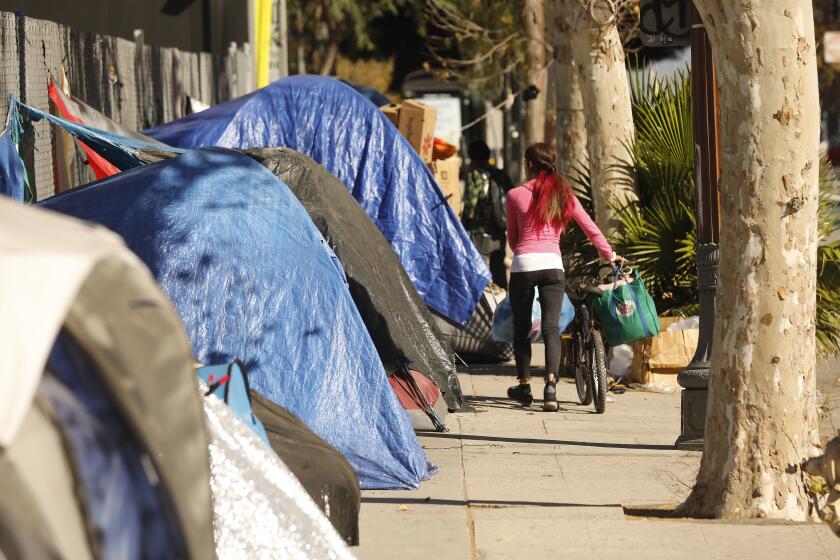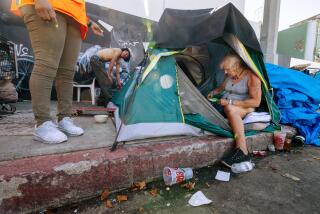Editorial: A fact check on Rick Caruso’s magical thinking about L.A. homelessness

Can Rick Caruso really get 30,000 homeless people into some kind of shelter in 300 days if elected mayor of Los Angeles? That’s what the mall developer says in one of his recent ads, suggesting that his homelessness plan is “bigger” than that of his rival Karen Bass. (The ad plucks out phrases from a Times news article without full context.)
The only thing Caruso seems likely to do is fail bigger than Bass.
His plan calls for 30,000 interim beds divided between tiny homes and “sleeping pods” set up in existing buildings such as warehouses — which sounds like the cubicles in structures in Mayor Eric Garcetti’s A Bridge Home program. Caruso has said the one-time cost of building or acquiring the housing could be as much as $874 million.
The L.A. Times estimates the cost of operating this venture at $660 million a year, or about $22,000 a person. That’s $1,833 a person per month. You could rent each an apartment for that — and then they would be permanently housed and no longer homeless. Of course, finding thousands of available apartments will be difficult until there’s a lot more housing built in the city.
The L.A. Times’ editorial board endorsements for statewide ballot measures, elected offices in Los Angeles city and county, L.A. Unified School District board, L.A. county superior court, statewide offices, the state Legislature and U.S. House and Senate seats.
And where are all these tiny home villages going to be placed? Caruso says on his campaign website that there are hundreds of surplus government properties. But in a study from January, city Controller Ron Galperin cautions that not all surplus sites are suitable for building and identified only 26 possible candidates. There has been such strong pushback in some L.A. communities that a couple of tiny home village projects have stalled.
Caruso recently said he thinks accessory dwelling units, or ADUs, that homeowners build on their properties might be used for homeless housing. ADUs are an important addition to the supply of affordable housing, but not a solution to the crisis. It remains to be seen whether residents who want anti-camping laws to keep homeless people off streets will then welcome them living in their backyard ADUs.
Bass offers a somewhat more realistic homelessness plan and said she will concentrate on finding interim housing or permanent housing for 17,000 people her first year. (That is an adjustment upward on her initial promise of 15,000.) To do this, she will look to increase master-leasing of buildings, make it easier to use federal emergency housing vouchers and turn motels and hotels into housing. Bass has taken on quite a challenge here but her plan is more achievable than what Caruso is selling.
Homeless numbers rose significantly less in the past two years. Experts say if we want them not to shoot up again, keep tenant protections in place.
Lifting L.A.’s 42,000 unsheltered residents out of homelessness will ultimately require finding or developing more permanent homes. That doesn’t mean we don’t need some temporary shelter beds — we do. But if we had more permanent housing, the flow of people from streets to shelter to housing would go faster.
Politicians putting numbers and deadlines on solving homelessness, the most profoundly difficult problem of our era in Los Angeles, has rarely — OK, never — panned out. Garcetti promised to end veteran homelessness by a certain date — and didn’t, though he gets credit for helping to significantly decrease veteran homelessness.
Caruso cannot magically sweep homeless people off the streets in less than a year. Hasn’t that been tried anyway? Anti-camping ordinances, sanitation workers taking away homeless people’s belongings, and booting people out of parks has yet to solve homelessness. And it never will.
More to Read
A cure for the common opinion
Get thought-provoking perspectives with our weekly newsletter.
You may occasionally receive promotional content from the Los Angeles Times.












